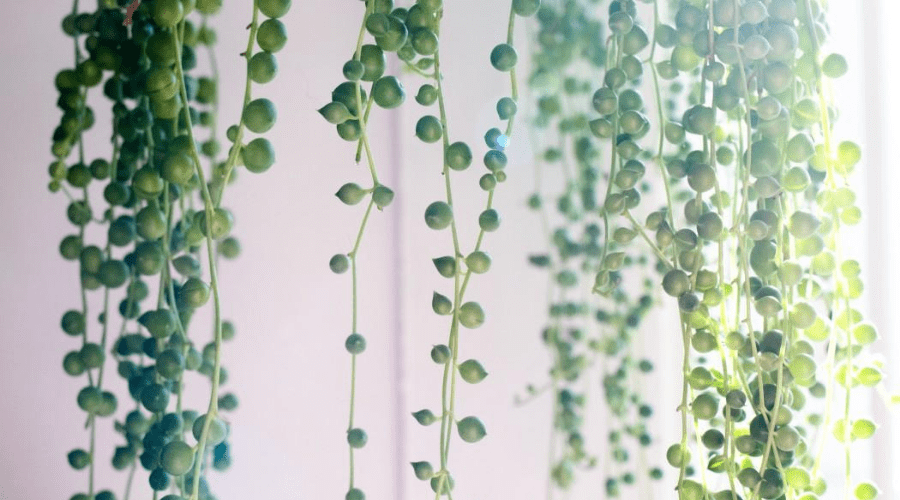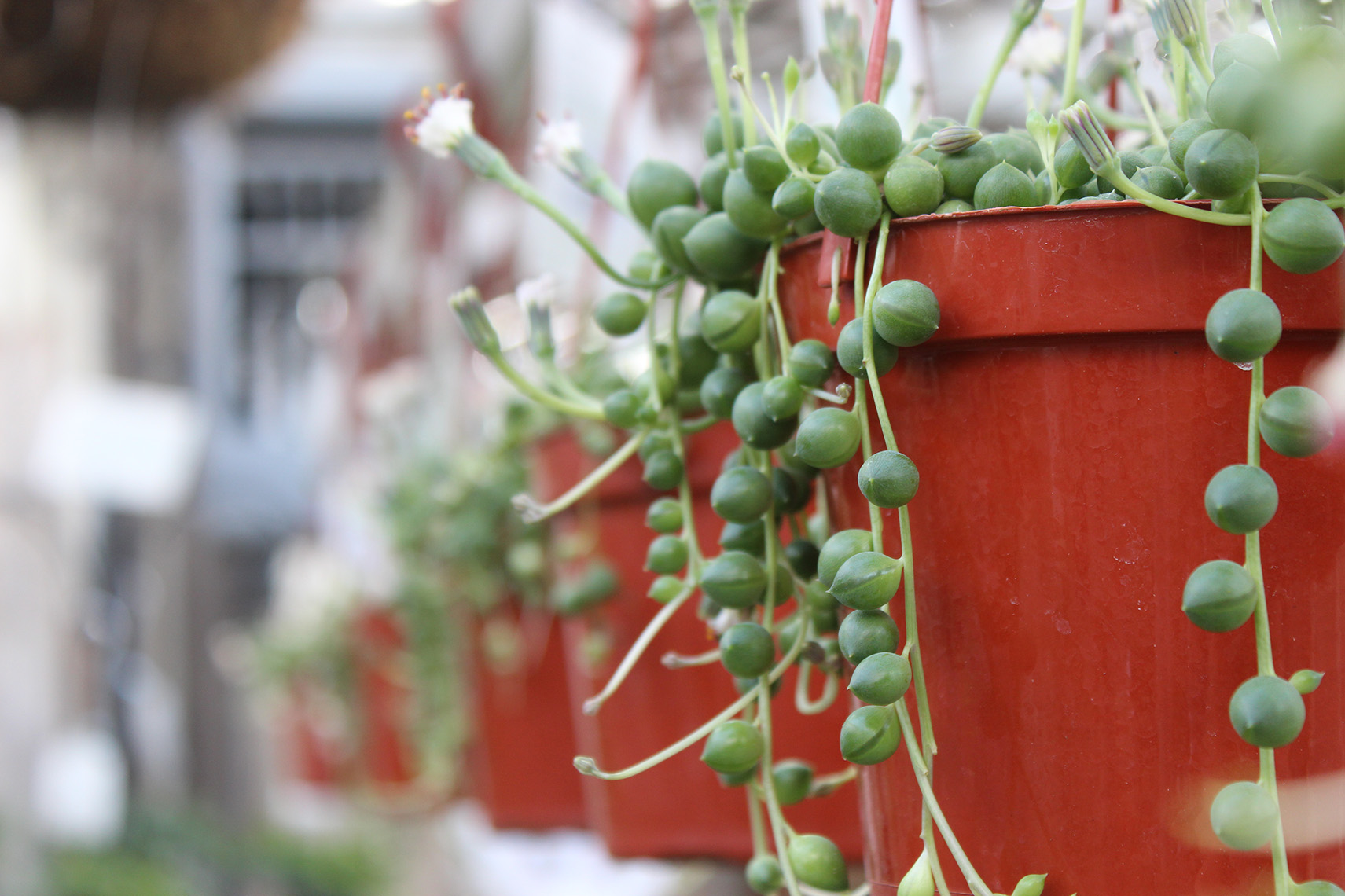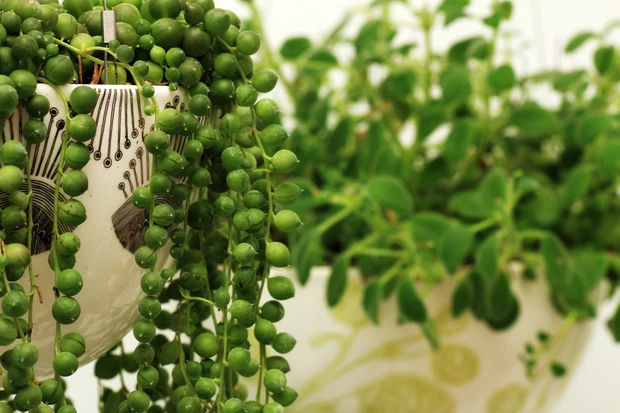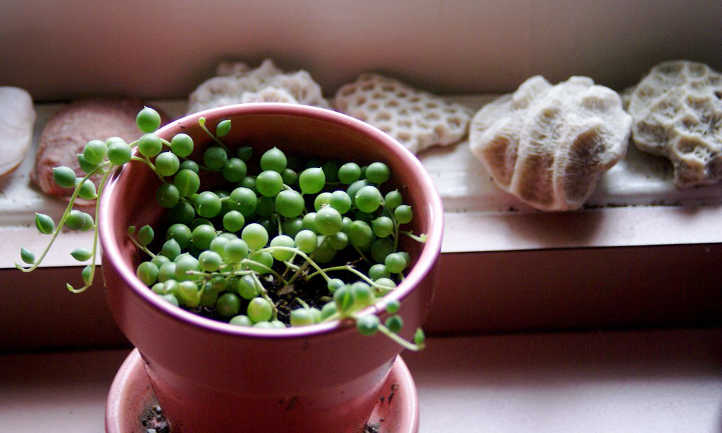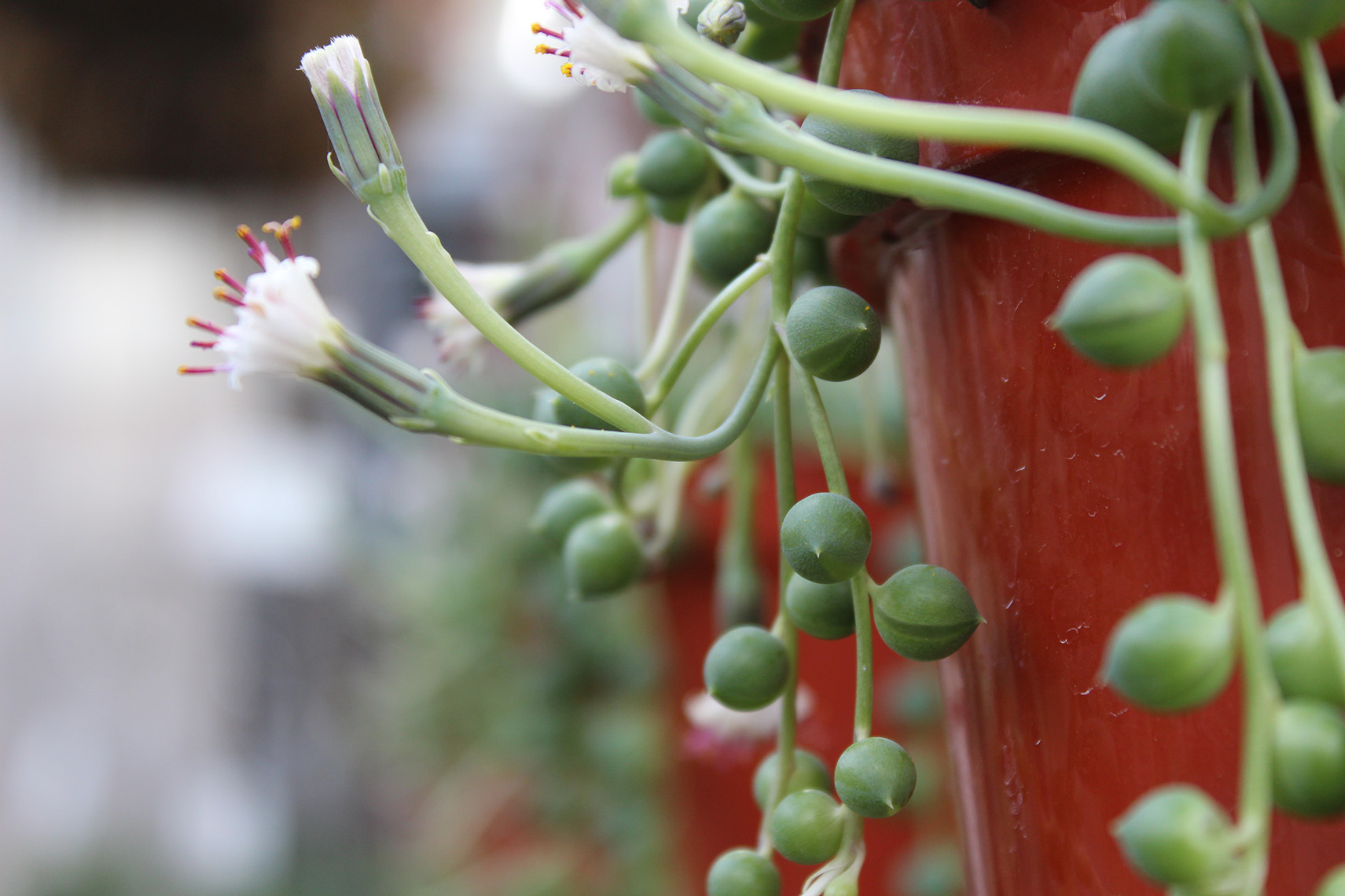Sunny Location
It looks beautiful trailing across a desk or bookshelf or even hanging in a sunny window, where the vines can trail down for interest. Although these plants look delicate, they’re part of the succulent family—a generally easy-to-care-for group of plants. This one, in particular, is a sure winner for a special space by your window.
